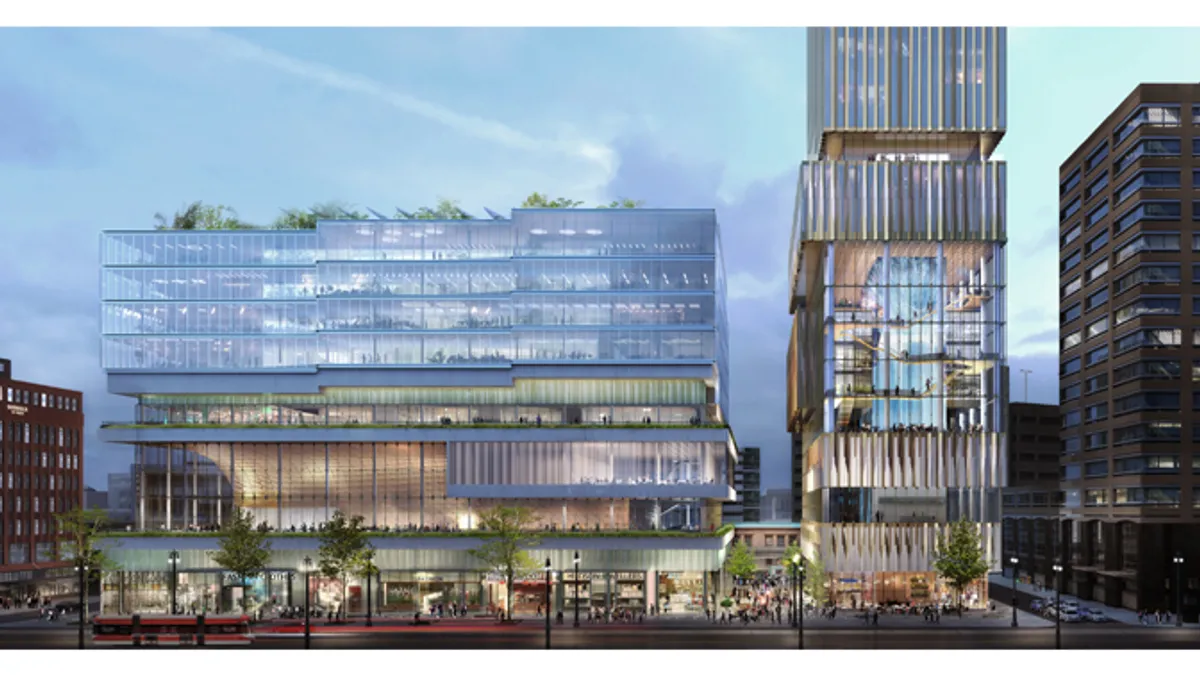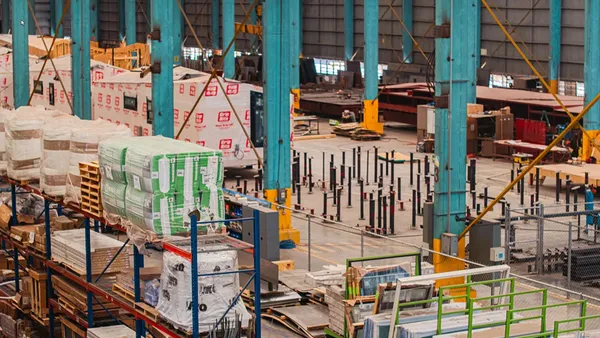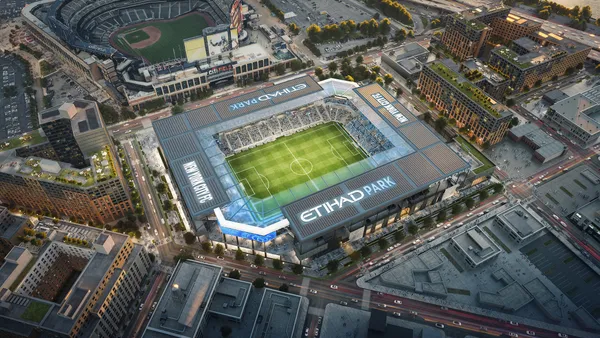Dive Brief:
- The development company owned by Quicken Loans founder and billionaire Dan Gilbert told Crain's Detroit Business that the $909 million mixed-use tower project it is building on the former site of Detroit's iconic J.L. Hudson department store could surpass 900 feet, which would make it one of the tallest buildings in the U.S.
- Bedrock LLC had previously said the tower would be 800 feet tall but could increase to as much as 912 feet, which is the highest that building can go and still use the elevator core system as designed. Joe Guziewicz, vice president of construction for Bedrock, told Crain's that the added height would offer the most flexibility for determining the building's final configuration of possible residential, hotel, commercial or other space.
- If Bedrock adds the extra 100 feet to the tower, which is the centerpiece of a complex that includes a pedestrian-activated alleyway separating it from a nine-story podium, costs are likely to rise as well. The price tag is already up $134 million from when the project was first announced as 734 feet. Hamilton Anderson Associates and SHoP Architects are the designers for the high-rise project, and Barton Malow is the general contractor.
Dive Insight:
The tower is one of four Gilbert projects totaling more than $2 billion that the Michigan Economic Development Corp. cleared for $618 million in brownfield redevelopment financing through the Michigan Strategic Initiative. The other three projects are the $830 million Monroe Blocks mixed-use project, which will include office, retail and commercial space; the $313 million Book Tower and Book Building, which will eventually feature hotel, conference, office and retail space; and a $95 million expansion of the One Campus Martius building that Quicken Loans co-owns.
Projects without the access to financing that Gilbert and his companies have — and even ones that are flush with cash — might forego the last-minute design changes in order to lock in a construction budget and schedule as soon as possible. These are two project elements that lenders typically want to see firmed up as part of a loan application package. Having a firm budget and construction timeline also allows the owner to choose a general contractor, which then can collect bids from subcontractors.
The sooner subcontractors are on board, the sooner critical tasks can be scheduled. Subcontractors and major vendors are also often responsible for ordering or fabricating long-lead items like windows or specialty materials and equipment, so any changes or uncertainty around design can cause potential project delays.













